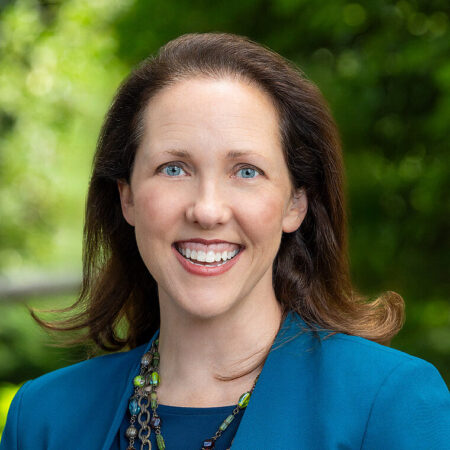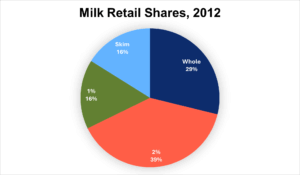Author: Rachel Ravencraft
USMCA: An opportunity dairy can’t miss
 By Shawna Morris, Executive Vice President, Trade Policy & Global Affairs
By Shawna Morris, Executive Vice President, Trade Policy & Global Affairs
The first mandatory review of the U.S.-Mexico-Canada Agreement (USMCA) will take place in 2026, bringing all three countries together to evaluate the agreement’s first five years and consider changes. For U.S. dairy producers, this review is a critical opportunity to finally secure the gains promised under USMCA.
When USMCA was implemented in 2020, it was expected to deliver a limited yet important expansion into the Canadian market for U.S. exporters. The deal also established rules to limit Canada’s offloading of artificially low-priced dairy ingredients into global markets and to safeguard the ability of U.S. producers to use common names like “Parmesan” in Mexico. Five years in, there are still shortfalls in each of these key areas.
Canada’s TRQ manipulation and export loopholes
From day one, Canada has repeatedly violated its obligations through its tariff-rate quota (TRQ) allocations, which are designed to allow U.S. producers to export a certain quantity of a product tariff-free. However, Canada has manipulated the system by giving the vast majority of the quota allotments to Canadian processors instead of allowing others throughout the Canadian supply chain a fair shot at securing and filling the quotas. As a result, dairy TRQ fill rates remain chronically low. For example, U.S. dairy exporters have missed out on over 15,000 metric tons of bulk cheese exports over the past five years — and that is just one quota.
Adding insult to injury, Canada has created a new workaround that enables its producers to continue to dump artificially low-priced dairy proteins, which undermines commercially priced U.S. products outside of Canada. National Milk Producers Federation (NMPF) estimates that Canada’s dairy protein exports benefiting from this policy equate to over $740 million of Class IV Skim paid to producers over the last four years.
Mexico’s common name commitments
Mexico is a valued and vital partner. Unfortunately, it has fallen short in one important USMCA area: protection of common cheese names.
Five years into the USMCA agreement, Mexico has failed to implement regulations to ensure that no new barriers arise to the use of common cheese names. This leaves many widely used names like “Feta” and “Parmesan” vulnerable to geographical indication restrictions as the European Union advances its trade deal with Mexico toward implementation.
A coordinated and forceful response
In preparation for next year’s review, the NMPF and the U.S. Dairy Export Council (USDEC) have mounted a coordinated and proactive strategy.
Last week, with robust support from across the U.S. dairy community, 74 members of the House of Representatives urged the U.S. Trade Representative (USTR) to address these issues. To complement that call, NMPF and USDEC testified before USTR on Dec. 3 to outline the importance of ensuring USMCA lives up to its potential.
To tackle Canada’s growing policy-driven dairy exports, NMPF and USDEC also testified and submitted comments to the U.S. International Trade Commission as part of its investigation into U.S. competitiveness in nonfat milk solids — an inquiry launched at USTR’s request following NMPF and USDEC advocacy regarding Canada’s distortions of global dairy markets.
Meanwhile, NMPF, USDEC, and the Consortium for Common Food Names continue to work with the U.S. and Mexican governments to ensure that the use of common names can continued unimpeded in Mexico.
Conclusion
These efforts reflect a broader strategy by NMPF and USDEC, working together with the wider U.S. dairy community, to enter the 2026 USMCA review with a strong, well-documented case for holding trading partners accountable and ensuring that U.S. dairy producers receive the market access and fair competition they were promised.
This column originally appeared in Hoard’s Dairyman Intel on Dec. 22, 2025.
Dairy Industry Praises Julie Callahan Confirmation as Chief Agricultural Negotiator
The National Milk Producers Federation, U.S. Dairy Export Council and the Consortium for Common Food Names commended the Senate confirmation of Dr. Julie Callahan to serve as Chief Agricultural Negotiator for the Office of the U.S. Trade Representative.
“Dr. Callahan will be an incredible Chief Agricultural Negotiator,” Gregg Doud, president and CEO of the National Milk Producers Federation, said. “This is a critical position for U.S. agriculture, and Dr. Callahan is the right person for the job. Her work to open new markets and opportunities for U.S. agricultural producers is second to none. U.S. dairy will be greatly served by her skilled hand and her commitment to delivering meaningful, lasting results.”
“Congratulations to Dr. Julie Callahan on her confirmation as Chief Agricultural Negotiator,” Krysta Harden, president and CEO of the U.S. Dairy Export Council, said. “This is an important moment for American agriculture, and her leadership comes at exactly the right time. Dr. Callahan’s deep understanding of global markets and unwavering commitment to America’s farmers and food manufacturers will serve the country well. We look forward to working with her to expand market access, resolve long-standing trade barriers and champion U.S. dairy on the world stage.”
“Dr. Callahan’s confirmation as Chief Agricultural Negotiator marks a truly important moment for American agriculture and for U.S. leadership in global trade,” Jaime Castaneda, executive director of the Consortium for Common Food Names, said. “Few individuals combine the depth of expertise, diplomatic talent, and unshakable commitment to America’s producers that Dr. Callahan brings to this role. She has demonstrated herself as a champion for the rights of American producers to use the common food and beverage terms that global consumers have come to know and love. We look forward to joining her in the fight to preserve and grow global market opportunities for our farmers, ranchers and exporters for generations to come.”
NMPF Celebrates House Passage of the Whole Milk for Healthy Kids Act
From NMPF President & CEO Gregg Doud:
“It’s hard to overstate the significance of congressional passage of the Whole Milk for Healthy Kids Act, not only because it represents major progress in improving the nourishment of American schoolkids, but also because of what it says about how persistent, long-term effort can still bring bipartisan success in Congress.
“Since 2012, when federal nutrition rules took whole and 2% milk out of school meals programs, dairy farmers and their cooperatives have pointed out the flaws in that decision, which wasn’t aligned with consumer choice. What was true then became even more true in years to come, as newer research consistently showed the value of milk at all fat levels and consumers moved even further toward fuller-fat varieties in their purchases.
“And now the day has arrived. We thank Chairman Glenn “GT” Thompson of Pennsylvania and Representative Kim Schrier of Washington for their critical roles in championing the most recent version of this important legislation to the finish line and the many other congressional leaders who preceded them in their efforts to protect access to nutritious milk in schools . Dairy doesn’t succeed without tireless advocates on Capitol Hill, and it’s been an honor to work with these members and their staffs in this effort.
“The next step, after a presidential signature, is implementation. We pledge our fullest support to federal officials and school districts across the nation to help with implementation of this important legislation. Congress made a positive difference today. We are thrilled to be a part of it.”
NMPF’s Galen Closes Career, With a Message
History may not rhyme, but it echoes, and for all the challenges dairy has faced, a few key areas have continued to resurface throughout Chris Galen’s nearly three decades in dairy.
“A lot of what I had worked on at the start of my career, and also now in the last few years of my career at National Milk, has been on milk pricing, in particular federal milk marketing order reforms,” said Galen, NMPF’s longtime communications leader and the current Senior Vice President of Member Services and Governance, in a Dairy Defined podcast. “A lot of what we have to do, has to do with just making certain that farmers are paid fairly.”
Galen reflects on the changes of dairy’s structure in the 21st century, the continued importance of family farms to dairy, and the evolution of media that has made it easier to serve members while getting dairy’s message to a broader audience.
Whole Milk is (Excruciatingly Close to Being) Back
It’s so close you can almost taste it.
Senate passage of the Whole Milk for Healthy Kids Act means all that remains is for the House of Representatives to bring it to the floor for a vote. And the House vote should be a foregone conclusion: In 2023 the chamber passed it overwhelmingly, and if anything, political support should be even stronger this time.
Whole milk will be back in schools, and that’s another cause for holiday cheer. Nutrition science over the past decade has shown its place in a healthy child’s diet. And consumers are speaking ever-more-loudly in its favor. To put it in a graphic: Using USDA data, below are the market shares of unflavored whole, 2%, 1% and skim milk in 2012 — the year federal rules changed to keep whole milk out of federal nutrition programs…

…and in 2024, after a dozen years of “healthier” options in schools.

The science has spoken. And as shown above, consumers have spoken, increasingly turning to whole milk at home even as schools labor under restrictions. We at NMPF have spoken, and spoken, and spoken, again and again. And you can speak too, via our call-to-action that helps you write your House member as an advocate for whole milk.
It’s time. In fact, it’s long past time. But it’s about to happen, and you should be a part of it. Write your lawmaker, raise a glass — and look forward to better school nutrition in 2026.
NMPF, USDEC Praise Bipartisan Call for USMCA Dairy Enforcement
The National Milk Producers Federation and the U.S. Dairy Export Council commended 74 House lawmakers today for sending a bipartisan letter urging the U.S. government to leverage the U.S.-Mexico-Canada Agreement (USMCA) 2026 Joint Review to address concerns over the deal’s dairy provision implementation.
The letter to United States Trade Representative Jamieson Greer highlights Canada’s attempts to evade its dairy commitments by misallocating its USMCA dairy tariff rate quotas and continuing to export artificially low-priced dairy proteins without appropriate limits. It also touches on Mexico’s need to fully implement common cheese name protections agreed to as part of USMCA. The lawmakers called on the administration to ensure these issues are resolved during the upcoming review process.
“USMCA raised the standard for what a trade agreement could be and promised new opportunities for U.S. dairy farmers,” Gregg Doud, president and CEO of NMPF said. “Unfortunately, the Canadian government has continued to evade its dairy trade obligations, and U.S. dairy farmers are not seeing the full benefits USMCA intended. We commend Representatives Tenney, DelBene, Wied, and Costa for championing this effort and working with the Administration to hold our trading partners accountable.”
“Our industry thrives when trade agreements deliver real results for the people they are meant to support,” Krysta Harden, president and CEO of USDEC said. “Representatives Tenney, DelBene, Wied, and Costa are standing up for our dairy producers and processors by ensuring our trading partners honor their trade obligations. We are grateful for their leadership and for their commitment to securing the full benefits of USMCA for U.S. dairy. USDEC is committed to working closely with both Congress and the Administration to address these dairy issues as the USMCA Review moves forward.”
U.S. dairy exports to Mexico and Canada last year exceeded $3.6 billion, accounting for 44% of total export value. USMCA preserved duty-free access for U.S. dairy into Mexico and introduced a series of provisions to expand market access into Canada and discipline trade-distorting practices, both of which Canada has failed to fully implement.
Preparing producers for screwworm
 By Dr. Jamie Jonker, Chief Science Officer
By Dr. Jamie Jonker, Chief Science Officer
The USDA’s Animal and Plant Health Inspection Service (APHIS) released a draft of its New World Screwworm (NWS) Response Playbook in October, building on Secretary Rollins’ initial five-pronged plan released earlier this year to mitigate the spread of screwworm. The playbook outlines key approaches, resources, and tools to implement animal health response activities in the event of a U.S. detection of screwworm.
The National Milk Producers Federation participated in two stakeholder dialogues that were used to help inform USDA in developing the draft NWS playbook and has submitted written comments. APHIS is continuing to gather feedback from states and the industry to help ensure operational useability and alignment with field practices.
What this means for producers
The response playbook was developed to provide guidance for animal health officials and disease response teams, but it does contain some information and resources for farmers.
Key activities to note are:
- Producers who suspect a screwworm infestation in one or more of their animals should immediately quarantine affected animals and report the case to their local veterinarian, state animal health official, or USDA. Do not attempt to treat suspected screwworm without first reporting it to a veterinarian or health official.
- In the event of a screwworm infestation, USDA and/or state officials will immediately establish a minimum 20-kilometer infested zone and a surrounding 20-kilometer adjacent surveillance zone around premises with an infested domestic animal, the location of infested wildlife, or the location of NWS fly detections. They will also establish a fly surveillance area that overlaps and extends outward from the infested and adjacent surveillance zones.
- Once an infested zone is established, officials will implement area quarantine and movement requirements, including premovement animal health inspection and treatment when appropriate, based on standardized continuity of business NWS animal health certification guidance.
- A health certificate is required for interstate and intrastate movement of farm-raised animals originating from an NWS-infested zone. State animal health officials can provide guidance on the forms and state system to use.
- An official, validated premises identification number (PIN, premises ID) is required on all health certification forms for interstate and intrastate animal movement.
- All animals to be moved require animal identification.
- Owners of animals subject to NWS animal movement requirements are encouraged to obtain a valid premises identification and to implement animal identification requirements as soon as possible, and ideally before being located within an NWS-infested zone, to increase their readiness for NWS response.
- There are no outlined movement requirements for animals that are being moved from an unaffected area into an infested zone, or for animal products (milk).
How FARM helps
The National Dairy Farmers Assuring Responsible Management (FARM) Animal Care Program addresses key aspects of animal and facility management that can be used to prepare farms for an outbreak. Farmers are encouraged to use FARM resources and tools to create individualized on-farm best practices in animal welfare and biosecurity.
The FARM Animal Care Version 5 Standards outline:
- The Herd Health Plan (HHP) includes a written protocol for pest control, fly control and parasite control. One protocol that specifies instructions for the control of each of the three areas or three separate protocols is acceptable for meeting this standard. While there are differences in the control of screwworm compared to regular flies, these protocols are a good starting point.
- The HHP has a written protocol for biosecurity. Sound biosecurity protocols demonstrate a commitment to animal health and food safety. As part of an effective HHP, all farms should have a written biosecurity protocol that has been developed in consultation with their herd veterinarian.
For farms developing their biosecurity protocol, the FARM Biosecurity Program has resources that can help farmers build a protocol that fits their farm, is efficient for their staff and is effective as it is based upon sound biosecurity practices. FARM Biosecurity is a national platform, focused on preventing the introduction of, detecting the presence of, or containing the spread of infectious and noninfectious diseases. It provides farms with biosecurity plan templates and educational materials on the best management practices to prevent disease introduction and spread.
For more information on the FARM Program, please visit nationaldairyfarm.com.
This column originally appeared in Hoard’s Dairyman Intel on Dec. 4, 2025.
NMPF, USDEC Testify on USMCA Dairy Priorities at USTR Hearing
NMPF and USDEC Executive Vice President for Trade Policy and Global Affairs Shawna Morris testified today before the Office of the U.S. Trade Representative (USTR), urging the administration to leverage the 2026 U.S.-Mexico-Canada Agreement (USMCA) Review to ensure that the agreement’s anticipated benefits for U.S. dairy producers and exporters are fully achieved.
“USMCA is a critical agreement for the U.S. dairy community,” said Morris at the hearing. “It’s crucial that the Review address targeted implementation problems with Mexico and Canada to create an even stronger agreement that will be up to the task of facilitating U.S.-Mexico-Canadian trade for years to come.”
Throughout her testimony, Morris highlighted a few key priorities, including combatting Canada’s continued manipulation of its administration of dairy tariff-rate quotas (TRQs) that denies U.S. exporters the meaningful market access guaranteed under USMCA. She also focused on Canada’s circumvention of USMCA dairy protein export disciplines has resulted in continued offloading of low-priced dairy proteins, undercutting U.S. products in both domestic and global markets.
Morris urged the administration to ensure Mexico upholds its USMCA commitments to protect common cheese names such as “parmesan” and “provolone.” The issue is increasingly pressing as ongoing European Union trade negotiations with Mexico seek to restrict the use of generic terms in the United States’ largest dairy market.
The testimony builds on joint comments submitted by USDEC and NMPF on Oct. 31, as well as an Aug. 5 testimony and two filings provided to the U.S. International Trade Commission on July 15 and Nov. 17 as part of its Section 332 investigation into U.S. global competitiveness on nonfat milk solids. An investigation report due in spring 2026 will be an important resource for USTR to address Canadian attempts to evade its dairy protein export disciplines.
NMPF Summer Internship Taking Applications
The National Milk Producers Federation is offering a 10–12-week summer internship in the Washington D.C. metro area. This internship offers students the unique opportunity to better understand the intersection of U.S. dairy industry policy, regulatory affairs, and trade.
Interns will have the opportunity to learn from NMPF’s expert staff, covering areas including government relations, regulatory affairs, trade, communications, membership services and the National Dairy FARM Program. More information and the application can be found here. Applications close Dec. 31.
NMPF Calls Out Foreign Suppliers’ Anticompetitive Trade Practices
NMPF submitted final joint written comments with the U.S. Dairy Export Council on Nov. 17 to the U.S. International Trade Commission (USITC) as part of the agency’s Section 332 investigation into the United States’ global nonfat milk solids competitiveness.
The organizations in their comments highlight how Canada continues to distort global nonfat milk solids markets through its new Class 4a pricing system that enables the production of low-priced dairy proteins destined for export. Clear production shifts following USMCA’s implementation indicate a deliberate attempt by Canada to circumvent the trade deal’s export disciplines established for dairy proteins, consequently undercutting U.S. producers at home and abroad. As the United States begins the mandated USMCA 2026 Joint Review, the USITC report will be a significant resource in ensuring that the agreement works as U.S. negotiators intended.
The submission also underscores the long-term competitive imbalance created by the European Union’s historic subsidies for casein and caseinate production, noting that more than four decades of financial support allowed European processors to build a dominant global position that persists today. Although the subsidy scheme ended in 2013, its legacy remains evident in the scale, infrastructure, and export strength of EU manufacturers, particularly in Ireland, France, and the Netherlands. NMPF’s filing urges the USITC to recognize the cumulative effect of these foreign policies on U.S. dairy competitiveness and to reflect these realities in its final report.
The filing complemented an earlier submission on July 16 and joint NMPF and U.S. Dairy Export Council testimony by Jaime Castaneda and William Loux at a July 28 hearing. The investigation follows persistent NMPF advocacy for the U.S. government to address Canadian attempts to evade their USMCA dairy commitments in a manner that disadvantages U.S. producers.
NMPF Strengthens Ties in Mexico
NMPF built on its longstanding ties with Mexico during a USDA agricultural trade mission from Nov. 3–6, where Jaime Castaneda, executive vice president for policy development and strategy, and Shawna Morris, executive vice president for trade policy and global affairs, represented the organization as part of the U.S. delegation of agribusinesses and organizations led by USDA Secretary Brooke Rollins.
NMPF met with Mexican Undersecretary of Foreign Trade Luis Rosendo Gutierrez and leadership from the Mexican intellectual property office. The delegation also engaged Mexican producer and processor organizations and several major dairy importers.
Castaneda and Morris reinforced to Mexican government officials the importance of preserving and strengthening the mutually beneficial dairy trade relationship between the United States and Mexico. As part of that discussion, NMPF pressed Mexican officials to ensure full implementation of U.S.-Mexico-Canada Agreement (USMCA) provisions related to the protections of common cheese terms and prior users of generic names. U.S. exporters’ rights to use certain terms are at risk as the European Union advances toward implementation of its updated trade deal with Mexico, which includes various restrictions on the use of common food names.
NMPF will continue to work with the U.S. and Mexican governments to ensure the important bilateral trade relationship is preserved and outstanding issues like the right to use common names are resolved in the USMCA 2026 Joint Review process.





